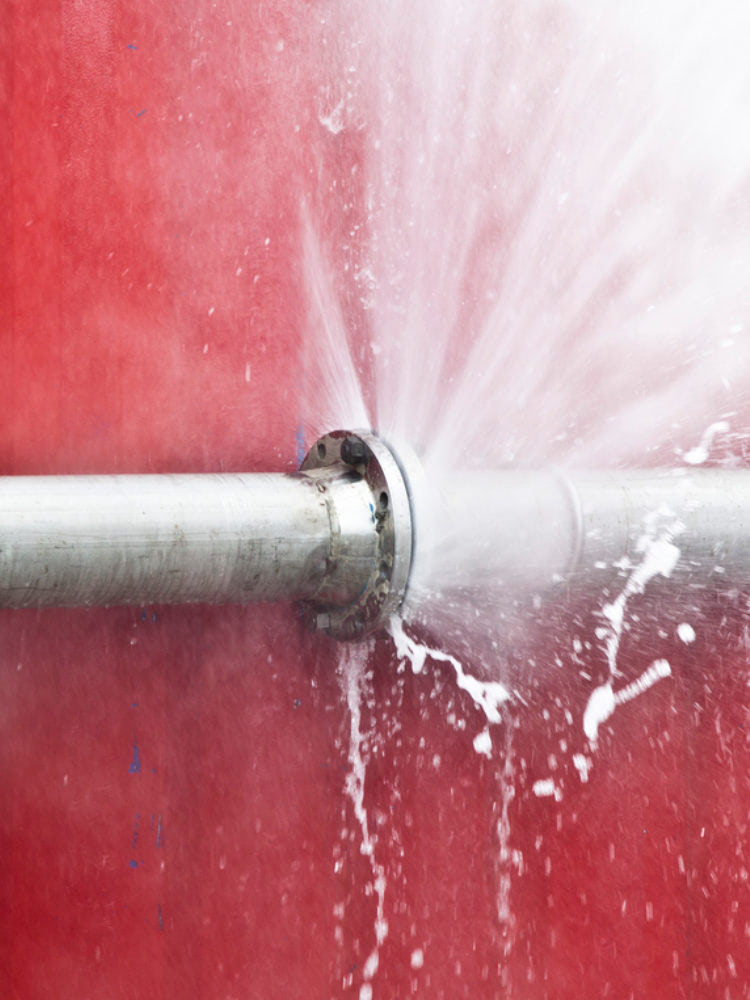Exploring the Top Causes for Drips in The Home
Exploring the Top Causes for Drips in The Home
Blog Article
What're your concepts on Most Common Causes of Leaky Pipes?

Leaks not only create waste of water however can additionally create unnecessary damages to your home and advertise unwanted natural growth. By understanding and looking for everyday scenarios that trigger leakages, you can protect your house from future leaks and unnecessary damages.
Encroaching origins
The majority of water leaks start outside your house rather than inside it. If you see an unexpected decrease in water stress, claim in your faucet, take some time to head out and also examine your lawn. You might discover damp spots or sinkholes in your yard, which could imply that tree origins are getting into water lines creating water to permeate out. You can have your plumber check for invasion, especially if you have trees or hedges near your building.
Rusty water supply
This could be the cause of staining or warping on your water pipelines. If our plumbing system is old, think about replacing the pipelines given that they are at a greater risk of corrosion than the newer models.
Malfunctioning Pipe Joints
The point at which your pipes connect is often the weakest web link in the waterline. Pipe joints can weaken over time, leading to water leakages. The majority of pipeline joints are not conveniently noticeable. If you have loud pipes that make ticking or banging noises, specifically when the warm water is turned on, your pipeline joints are most likely under a lot of pressure. It is a good idea to have your plumber inspect your system annually.
Immediate temperature changes.
Severe temperature changes in our pipes can create them to broaden and get all of a sudden. This expansion as well as tightening may cause splits in the pipelines, especially if the temperature are below freezing. It would be best if you kept an eye on just how your plumbing works. The presence of the previously stated circumstances regularly suggests a high risk.
Poor Water Connectors
Sometimes, a leakage can be brought on by loosened hose pipes and also pipelines that supply your home appliances. Generally, shifting is what creates the loose water Links. You could discover when it comes to a washing device, a tube might spring a leak due to shaking during the spin cycle. In case of a water connections leak, you may notice water running straight from the supply line or pools around your devices.
Clogged Drains
Clogged drains pipes may be aggravating and also inconveniencing, however they can often end up causing an overflow leading to break pipelines. Keep removing any type of products that may decrease your drains that might obstruct them to stay clear of such inconveniences.
All the above are sources of leakages but not all water leaks arise from plumbing leakages; some leakages might originate from roofing leakages. All leaks need to be repaired promptly to stay clear of water damages.
Leaks not just create waste of water yet can also cause unnecessary damages to your residence and also advertise undesirable natural growth. By recognizing as well as looking for everyday situations that create leaks, you can protect your residence from future leaks and also unnecessary damage. Today, we will look at six leak causes that may be causing your pipes to leak.
At times, a leak can be caused by loosened hoses and pipelines that supply your devices. In instance of a water links leakage, you might notice water running straight from the supply line or puddles around your devices.
How To Check For Water Leak In Your Home
How To Check for Leaks
The average household's leaks can account for nearly 10,000 gallons of water wasted every year and ten percent of homes have leaks that waste 90 gallons or more per day. Common types of leaks found in the home are worn toilet flappers, dripping faucets, and other leaking valves. These types of leaks are often easy to fix, requiring only a few tools and hardware that can pay for themselves in water savings. Fixing easily corrected household water leaks can save homeowners about 10 percent on their water bills.
To check for leaks in your home, you first need to determine whether you're wasting water and then identify the source of the leak. Here are some tips for finding leaks:
Take a look at your water usage during a colder month, such as January or February. If a family of four exceeds 12,000 gallons per month, there are serious leaks.
Check your water meter before and after a two-hour period when no water is being used. If the meter changes at all, you probably have a leak.
Identify toilet leaks by placing a drop of food coloring in the toilet tank. If any color shows up in the bowl after 10 minutes, you have a leak. (Be sure to flush immediately after the experiment to avoid staining the tank.)
Examine faucet gaskets and pipe fittings for any water on the outside of the pipe to check for surface leaks.
Undetected water leaks can happen without the home or business owner even realizing. If you suspect a water leak, but not able to find the source. It is time to contact a professional water leak detection service, The Leak Doctor.
How To Find a Water Leak In Your Home
https://www.leakdoctor.com/blog/How-To-Check-For-Water-Leak-In-Your-Home_AE197.html

As an avid reader about How to detect water leaks in your home, I figured sharing that chunk was beneficial. So long as you enjoyed our article plz do not forget to share it. Thank-you for your time invested reading it.
Fast and effective, call! Report this page